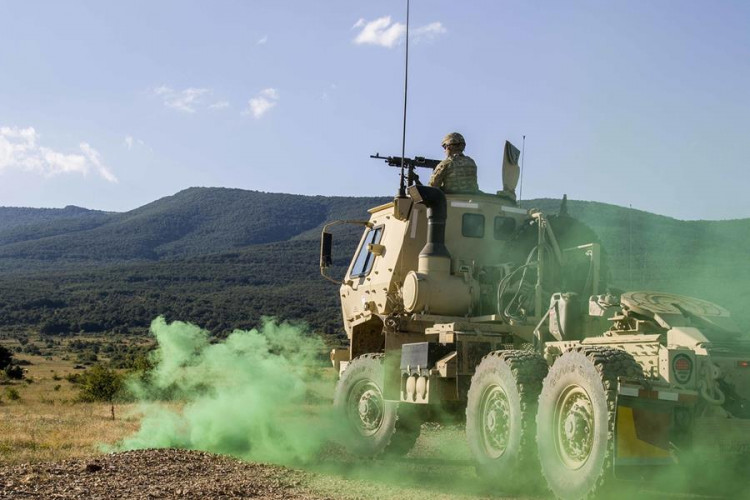The rarest artillery in the Ukrainian army was essential in forcing Russian troops off the important Snake Island in the western Black Sea.
The Russian withdrawal signifies a new chapter in the ongoing war for Snake Island, a treeless, 570-acre island that straddles the primary shipping channel between the Bosphorus Strait and Odessa.
The only known example of the 2S22 truck-mounted howitzer is depicted firing on Russian forces on a tiny island 80 miles south of Ukraine's important port, Odessa, in a defense ministry clip.
Operators of a TB-2 drone placed 155-millimeter shells on the island and triggering multiple secondary fires. According to reports, the surviving Russians escaped the island in small boats.
Whoever controls the island, which is officially part of Ukraine, can obstruct or protect grain-carrying cargo ships from Ukraine, war analysts say.
On February 24, Russian soldiers headed by the missile cruiser Moskva, the most capable air-defense ship in the Black Sea Fleet at the time, bombarded and occupied the island on the first full day of Russia's larger war against Ukraine.
It took the Ukrainians months and new strategies to expel the Russians from the island. Kyiv's military utilized drones, missiles, fighters, and artillery to render Snake Island uninhabitable for the forces of Moscow.
The crucial blow was dealt by a single 2S22. On the island, though, the gun cannot protect Ukrainian troops. Snake Island may continue to be a shell-pocked no-man's-land so long as the Black Sea Fleet dominates the surrounding waterways.
The Kramatorsk Heavy Machinery Plant in Kramatorsk, Donbas, eastern Ukraine, constructed the 2S22 around five years ago.
The new howitzer fires NATO-standard 155-millimeter shells as opposed to Soviet-standard 122-millimeter or 152-millimeter shells, allowing it to utilize foreign ammunition supplies.
Due to production issues in Ukrainian companies, Soviet calibers are becoming increasingly scarce. On the other hand, a dozen nations are capable of supplying hundreds of thousands of NATO-sized shells and are doing so.
The 155-millimeter gun placed on a six-by-six KrAZ-6322 truck narrowly survived destruction at the hands of Kramatorsk's own workers when the Russian army assaulted Ukraine on many fronts.
The Kramatorsk factory officials prepared to detonate the 2S22. According to Ukrainian politician Serhiy Pashynskyi, the officials' thought process was, "Destroy it so that it does not reach the enemy."
First in the south, then in the north, the Russian offensive was met with stout resistance and halted. The 2S22's vulnerability to capture diminished.






